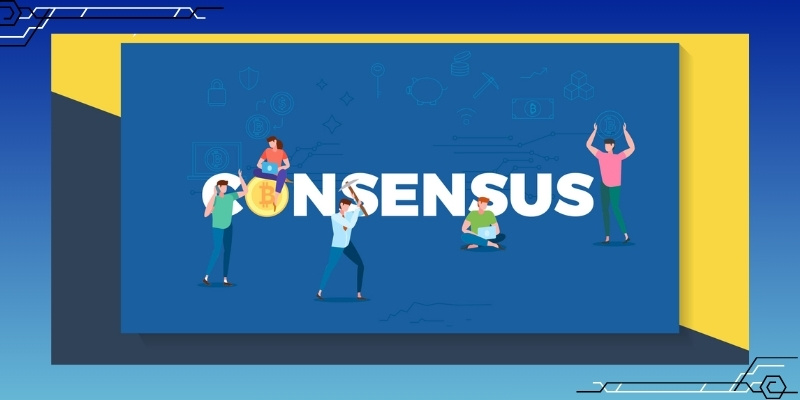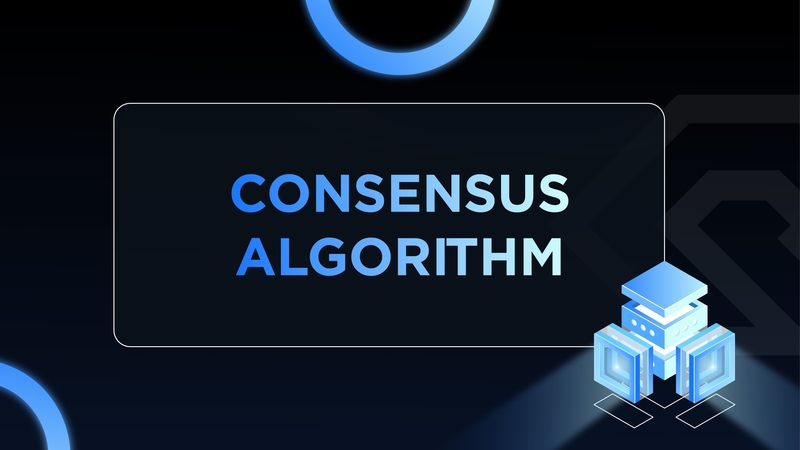Consensus plays a crucial role in ensuring that transactions and data are validated and consistent across all nodes in a network. So, what is Consensus? Understanding Consensus not only enhances your technological knowledge but also aids in making informed investment decisions, particularly when engaging with financial and cryptocurrency platforms.
What is Consensus?
In technology, Consensus refers to the mechanism through which nodes in a distributed system agree on a common decision or state. This process is essential for maintaining consistency and ensuring data integrity across the entire network without the need for a third-party intermediary.
In decentralized systems like blockchain, there is no central authority; instead, there are distributed and independent nodes, each holding its own copy of the data. When a new transaction occurs, the nodes must reach a consensus to confirm that the transaction is valid and to record it on the blockchain’s ledger.
It not only maintains the integrity and security of the system but also ensures that no node can manipulate or alter the data without the consent of the majority of other nodes in the network. This is why Consensus is so important in decentralized networks, where there is no central authority to supervise and verify transactions.
A classic example of Consensus is how blockchains like Bitcoin and Ethereum operate. Transactions within these systems cannot be altered or reversed once they are confirmed through the Consensus mechanism. Therefore, understanding Consensus is crucial for investors, helping them assess the security and reliability of these platforms.

Common Consensus Mechanisms
There are various Consensus mechanisms used in blockchain and distributed systems, each with its own advantages and disadvantages. Here are some of the most popular mechanisms:
Proof of Work (PoW)
Proof of Work is the first Consensus mechanism used in Bitcoin and remains one of the most common in current blockchain systems. PoW requires miners to compete to solve complex mathematical problems. The first to solve the problem is rewarded and granted the right to confirm a new transaction on the blockchain.
- Advantages: PoW is considered highly secure because it requires a vast amount of computational resources and energy to solve complex problems. This makes network attacks difficult, as hackers would need to control more than 50% of the network’s computational power. This is why PoW is believed to resist attacks and fraud.
- Disadvantages: However, PoW has a significant drawback: it is extremely energy-intensive and resource-consuming. Miners must use specialized computers to solve complex problems, which leads to huge electricity consumption. Additionally, this mechanism can cause network fragmentation, as miners with stronger resources have an advantage in solving problems.
Proof of Stake (PoS)
Proof of Stake is another Consensus mechanism used in many blockchains, particularly Ethereum (after transitioning from PoW to PoS). Instead of requiring miners to solve complex problems, PoS selects validators based on the amount of cryptocurrency they “stake” in the system. Participants must stake assets in the system, and those with larger stakes have a higher chance of being selected to validate transactions.
- Advantages: PoS is much more energy-efficient than PoW since it does not require complex computations. Additionally, PoS reduces the operational costs of the network. Another significant advantage of PoS is its ability to better protect the network against attacks, as an attacker would need to own a large portion of the network’s assets to successfully attack it.
- Disadvantages: However, PoS can lead to power centralization, as individuals with more assets have more opportunities to validate transactions and potentially influence the system’s transparency.

Delegated Proof of Stake (DPoS)
Delegated Proof of Stake is an improved version of PoS, where users vote to select delegates to validate transactions and secure the network. These delegates are responsible for maintaining consensus and authenticating transactions in the network.
- Advantages: DPoS improves network performance and flexibility, enabling faster transaction processing. This mechanism also reduces power centralization, as users can choose representatives they trust.
- Disadvantages: One downside of DPoS is that the limited number of delegates could lead to a lack of transparency and centralization of power in the hands of a few individuals.
Practical Byzantine Fault Tolerance (PBFT)
PBFT is a Consensus mechanism used in enterprise systems or smaller networks. With PBFT, nodes in the network must agree on a common decision, even if some nodes are compromised or experiencing failures.
- Advantages: PBFT is highly efficient and fast, especially when the number of nodes is small. It is ideal for systems with fewer nodes that require quick consensus.
- Disadvantages: While PBFT is effective in small systems, it struggles to maintain performance and scalability as the number of nodes increases.
The crucial role of Consensus in Blockchain
In blockchains like Bitcoin or Ethereum, Consensus plays a vital role in protecting and validating transactions. Unlike centralized systems, where a single organization or intermediary has control, blockchain operates based on the consensus of all nodes in the network. This helps secure the system and ensures that no one can alter data without the agreement of the majority of nodes in the network.

It ensures that all transactions within a blockchain are valid and cannot be tampered with. When a new transaction is made, it is broadcast to the nodes in the network for verification. These nodes then use the Consensus mechanism to agree on whether the transaction is valid. If the majority of nodes agree, the transaction is recorded on the ledger and cannot be altered.
A typical example of Consensus in action is Bitcoin. If a hacker attempts to change information in the Bitcoin ledger, they would need to control more than 50% of the network’s computational resources, which is nearly impossible due to Bitcoin’s massive computational power. Therefore, Consensus helps protect the network from attacks and creates a secure, transparent environment for transactions.
Applications of Consensus in distributed systems
In distributed systems beyond blockchain, Consensus also plays a key role in ensuring data consistency and efficiency. These systems often consist of multiple independent computers or nodes, and maintaining a single version of data is a significant challenge. A typical example is in distributed database systems or resource-sharing networks, where nodes must agree on how to handle and store data.
One common application of Consensus beyond blockchain is in Distributed Databases. In these systems, data is not stored on a single server but is distributed across multiple servers. This allows the system to scale easily and increase fault tolerance. However, maintaining consistency among data replicas is challenging. Consensus algorithms like Paxos or Raft are used to help nodes agree on when to update or modify data.

Additionally, Consensus is used in decentralized finance (DeFi) systems and smart contract applications. In these systems, transactions and smart contracts must be verified and executed on distributed platforms, creating a trustworthy and secure environment without the need for third-party intermediaries.
Thus, what is Consensus? It is a critical element in distributed systems, especially in blockchain. This mechanism helps maintain agreement and security for transactions without requiring an intermediary. Understanding different Consensus methods will help you assess blockchain and distributed systems, enabling you to make informed investment decisions. Mechanisms like Proof of Work, Proof of Stake, and Delegated Proof of Stake each have their advantages and drawbacks, and each mechanism may be suitable for different use cases.
With the rapid development of blockchain technology and distributed systems, Consensus will continue to play a key role in ensuring the security, transparency, and efficiency of transactions in the network.
Be sure to follow Digital Economy Pluse for the latest updates and new insights every day!



